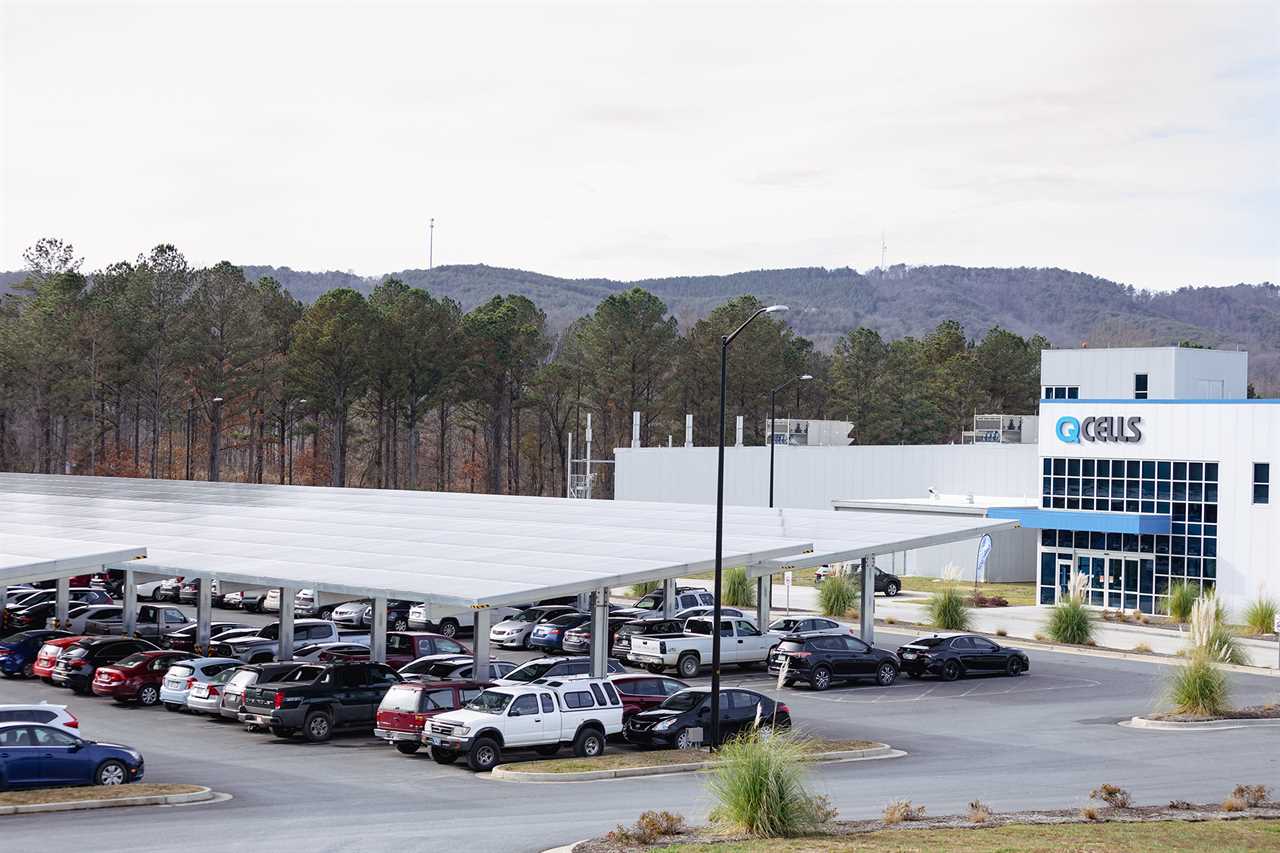
DALTON, Ga. — Tucked in the back of a nondescript industrial park in north Georgia, a factory sits as a symbol of what the Biden administration hopes will come from America’s new, bipartisan experiment with industrial policy.
Here, 700 workers at Hanwha Q Cells churn out more than 10,000 solar panels a day. It’s the largest operation of its kind on the continent.
The factory was hailed as a renaissance for domestic manufacturing by local and national politicians alike when it opened in 2019, partially in response to then-President Donald Trump’s trade policies. It is a place where, like in decades gone by, employees without advanced degrees have the potential to earn a wage that keeps them out of poverty by making a product essential for the American economy.
If President Joe Biden has his way, the factory will also be a harbinger of America’s economic future. The U.S. will need more than 100 assembly plants of Q Cells' size to produce enough panels to power Biden’s energy goals, which envision solar providing 40 percent of the nation’s electricity by 2035, or ten times its share today. And that’s to say nothing of the metals and technological components that make up the solar panels — all of which Democrats hope to push companies to produce stateside as well.
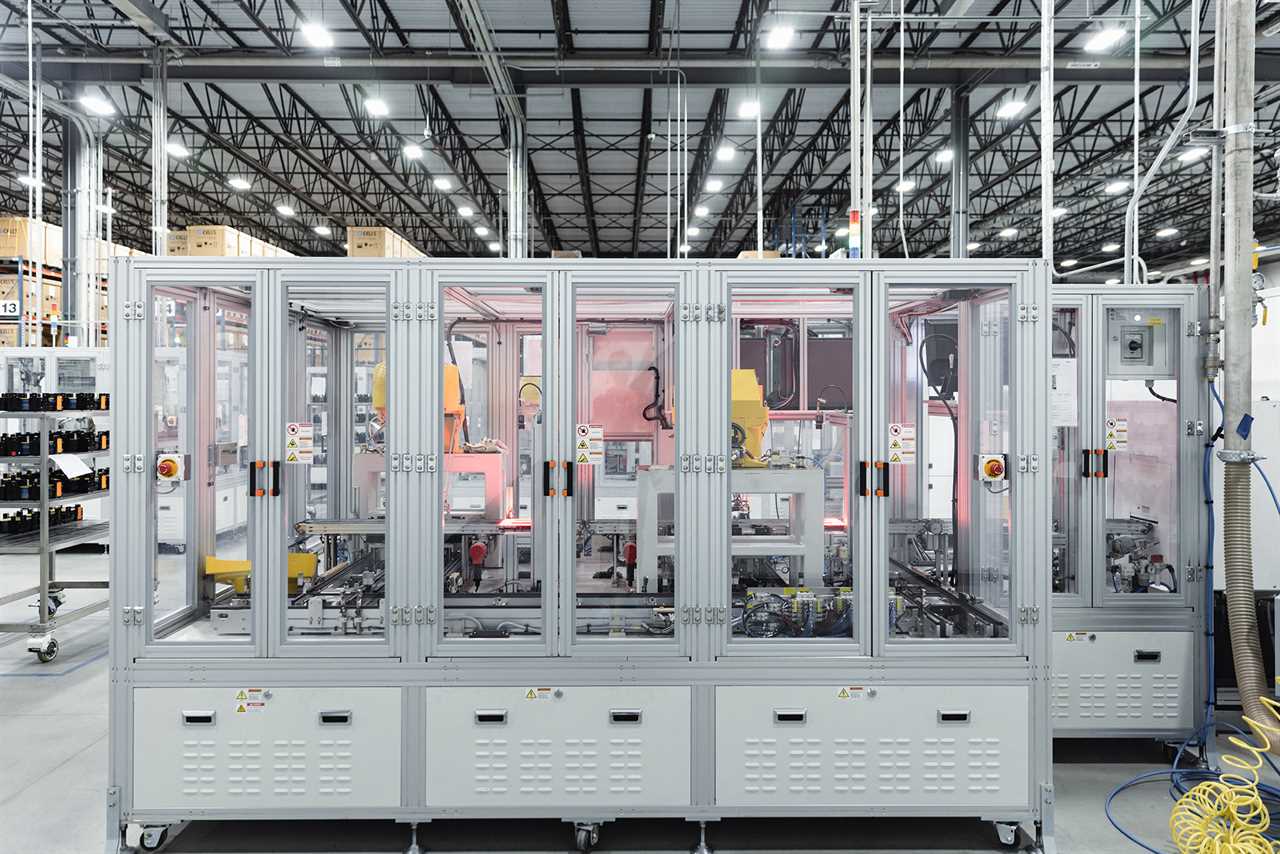
To do that, the White House is pinning its hopes on a combination of tariffs, trade restrictions on Chinese solar technology, and massive tax breaks in the Democrats’ stalled reconciliation package that would amount to the most expensive industrial policy since the New Deal.
But those big plans come with big costs, as well as political risk, for a president eager to show he cares about middle-class jobs. The manufacturing subsidies risk further raising consumer prices and snarling supply chains recovering from the Covid crisis, some economists say, which could dent Biden’s sliding poll numbers even more. Already, Republicans are using Biden’s sweeping industrial policy plans to depict him and congressional Democrats as reckless tax-and-spend liberals disconnected from pocketbook issues like inflation, hoping to seize on the economic discontent as the centerpiece of their campaign to take control of Congress.
“These rushed and hastily-constructed policy proposals will only exacerbate inflation, already at a 30-year high,” said Sen. Mike Crapo (R-Idaho), ranking member of the Finance Committee, “hitting the pocketbooks of hardworking middle-class Americans who are still recovering from an unprecedented public health emergency.”
Different administrations, similar economic aims
South Korea-based Hanwha decided to break ground on the factory outside of the town of Dalton after Trump’s Commerce Department imposed 30 percent tariffs on imported solar panels in 2018.
Those duties were part of an effort from the White House to recapture an industry largely lost to China during the Obama administration, when government subsidies from Beijing helped Chinese suppliers corner the global solar panel market.
“Without trade policy that we've had in various forms in the solar industry for the last 10 years, the U.S. solar manufacturing industry would not exist in any form,” said Scott Moskowitz, director of strategy and public affairs at Q Cells.
After decades of resistance, Democrats are now embracing trade tools and tariffs to rebuild domestic manufacturing — especially in solar and other clean energy technologies.
Key motivations are the decline in solar energy costs — making even domestic panels competitive against fossil fuels — and the desire to combat China, where many solar components are made with the forced labor of Uyghur Muslims and other minorities.
Rebooting American solar manufacturing can answer those concerns, Democrats and the White House argue, while providing the type of consistent, highly-skilled factory jobs that have fled northern Georgia and other industrial areas since the 1970s.

There’s also a more shrewd political calculation. The administration and Senate tax writers expect that linking their ambitious climate goals to American factories can help those policies gain support in Congress and with the public.
Administration officials who spoke on the condition of anonymity to detail policy plans say the jobs factor is especially important in a swing state like Georgia, which delivered Biden his razor-thin Senate majority.
“It would be political malpractice to be thinking about the kinds of investments that we're asking for, and Congress is contemplating, without writing American workers and American families into that script,” said a senior White House national security official who spoke anonymously to detail upcoming policy plans. “That’s a really important element of the theory of the case that gets this over the finish line.”
The campaign is a stark departure from Democratic administrations of Barack Obama and Bill Clinton, who largely embraced globalization and outsourcing to lower prices for American consumers, not to mention the free-trading Republican White Houses of Reagan and the two Bushes.
The last half century of U.S. trade policy has “heavily subsidized” the financial sector and outsourcing, said Democratic Sen. Jon Ossoff of Georgia, “while America’s domestic industrial base has atrophied.
“We need to be trading robustly and building stronger commercial relationships with our trading partners,” added the freshman senator, who authored new solar tax credit provisions in the reconciliation budget package with Finance Chair Ron Wyden (D-Ore.) “We also need a strong domestic industrial base.”
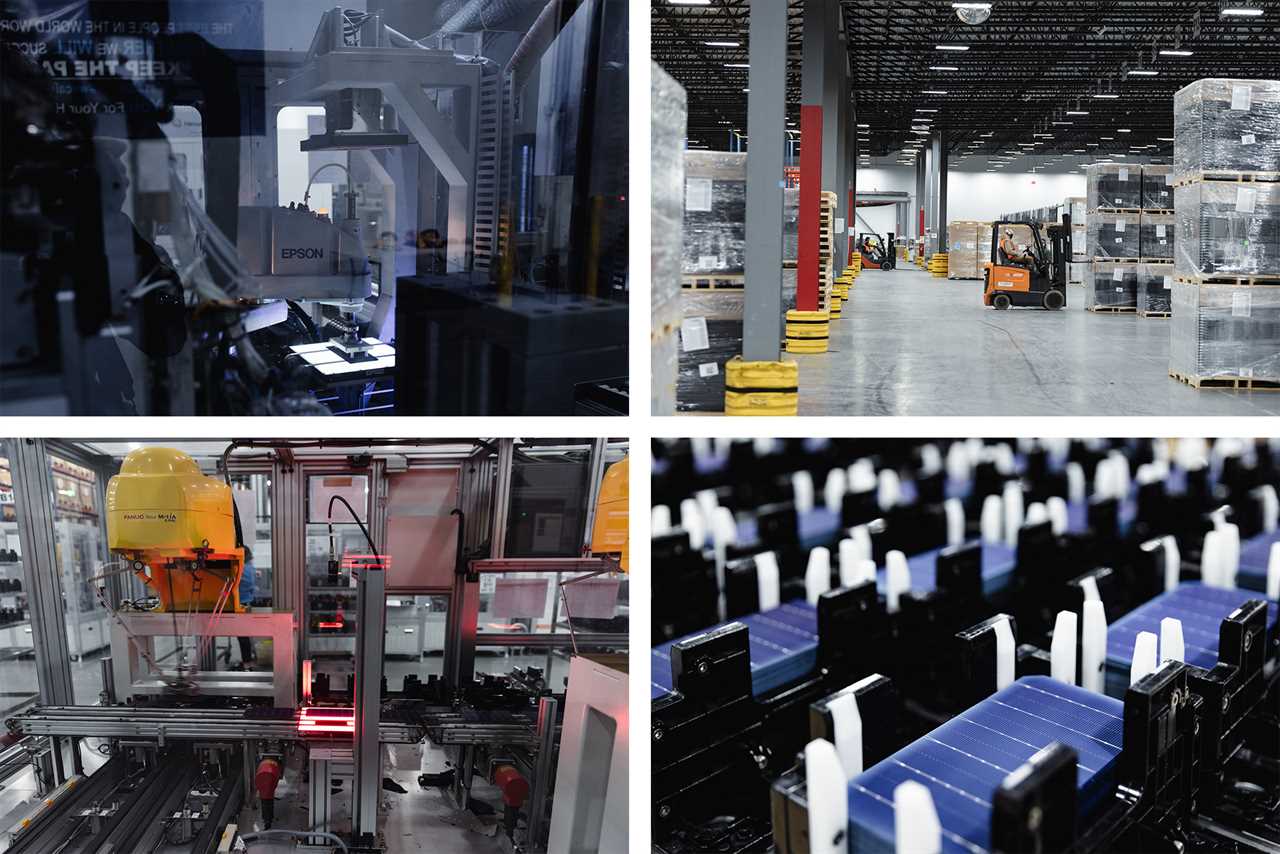
He and Biden officials, however, bristle at being called “protectionist,” and reject the comparison to Trump’s policies — despite their shared aim, at least rhetorically, of rebuilding domestic manufacturing.
The Biden approach represents a “complete break” from Trump’s policies, said a senior administration climate official, who also spoke anonymously to detail policy plans. Biden’s policies will be more targeted at communities in need, like where fossil fuel plants have shuttered, said the official, adding the administration is working with allies.
“We need a more nuanced approach than blanket tariffs that can actually end up hurting American workers and factories that are in a position today of depending on imports for inputs to their production,” the official said.

On the record, the White House calls its effort a "whole-of-government" effort to boost domestic manufacturing in strategic sectors. "This includes making transformational investments in our industrial base and workers, leveraging public procurement to support domestically produced goods, working with the private sector to promote quality and sustainability, and working closely with allies and partners to do this all effectively," according to a statement from a spokesperson for the National Security Council.
Even if Biden’s approach is different, some veterans of past Democratic White Houses view the industrial policy campaign as a harmful barrier to international commerce, which they promoted to lower prices for Americans.
“Instead of denying they’re protectionist, they would be better off saying they’re doing it to keep everyone safer and healthier,” said Bill Reinsch, a former Under Secretary for Export Administration in Clinton's Commerce Department now at the Center for Strategic and International Studies. “Plenty of people would still disagree with the policies and point out their negative consequences, but at least the debate would be an honest one.”
An ambitious, politically threatened program
The Biden administration’s approach will require both executive action and help from Congress.
Thus far, the White House has kept in place most of Trump’s tariffs, including those on imported solar panels. The U.S. International Trade Commission recommended in November that those tariffs for solar be extended. Biden could override that suggestion by the end of February — a rare, but not unprecedented, policy move — but for the time being they continue to help domestic panels compete against imports.
Additionally, the White House and Congress are cracking down on Chinese solar imports over human rights concerns. U.S. Customs and Border Protection this year blocked imports of silicon, a key solar material, from a major Chinese supplier over concerns it uses the forced labor of ethnic Uyghur Muslims.
The result, trade lawyers say, is any solar imports from China could be blocked by Customs unless companies can prove they were not made with forced labor. That’s already caused headaches for some solar project developers, who have struggled to get their panels out of port, and the enforcement is about to get tougher with the just-passed Uyghur Forced Labor Prevention Act (H.R. 6256 (117)).
For the most powerful part of Biden’s new industrial policy, Democrats envision an overhaul of the corporate tax regime to benefit domestic production, rather than outsourcing.
Provisions in Democrats’ stalled social spending bill include tax credits for each part of solar panel manufacturing and assembly. That includes mining silicon and other rare earth minerals, manufacturing the solar cells — today only available from Asia — and assembling the panels.
There would also be tax credits for companies that build solar, wind and other clean energy projects in the field. Those companies can earn higher credits for using domestic materials and components, or siting projects in areas where fossil fuel plants have closed. Energy analysts who helped craft the provisions say the impact could be significant as wind and solar expand — increasing the demand for American steel, for instance, by up to 20 percent.
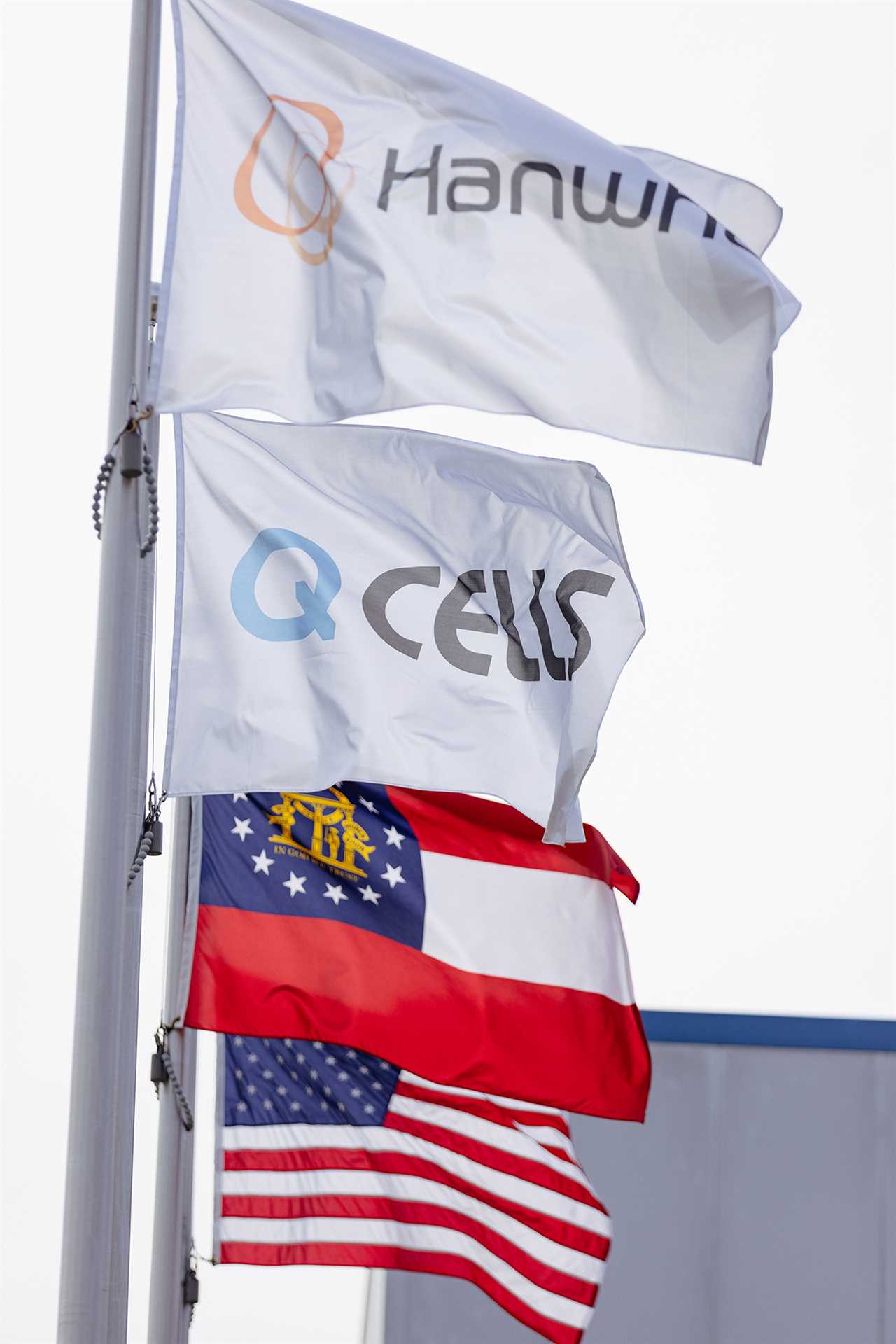
Q Cells’ officials largely agree, saying that the solar incentives will give it and other companies enough certainty to expand production in the U.S.
“If this passes, you're going to have groundbreakings to attend all next year,” said Moskowitz, pointing to Q Cells' recent investment to restart an idle polysilicon plant in Washington state as an example of the type of projects that tax incentives may spur.
Elements of Biden’s plan appear in jeopardy after Sen. Joe Manchin (D-W.Va.) said in late December that he would not vote for the reconciliation package. But Biden’s efforts to bring back manufacturing through tax credits likely can be reworked.
Although Manchin has lodged complaints about certain parts of the Democrats’ green agenda, particularly the idea to give additional tax credits for electric vehicles made with union labor, he has generally gone along with the party’s approach on clean energy in the Build Back Better bill.
The West Virginia Democrat over the summer struck a deal with Senate Majority Leader Chuck Schumer that said incentives for solar and wind would be fine as long as Democrats didn’t target fossil fuel production — a condition that party leaders largely have met.
Throughout the summer and fall, the climate and domestic manufacturing provisions largely survived negotiations with Manchin that pared back social spending in the bill. That’s left Ossoff and other backers confident they can pass their provisions, either alone or as part of a larger bill.
“Thus far, my team and I have built a coalition that has sustained this provision in the legislation while a lot else has fallen out,” Ossoff said. “If I have to regroup, I’ll regroup.”
Economic risks mount
Yet such a stark departure from economic orthodoxy could worsen Biden’s main economic headache — inflation. Republicans and right-leaning economists warn that injecting hundreds of billions of dollars in federal incentives into the economy could further juice prices by increasing labor costs and the prices of consumer goods.
Were the industrial policy to be enacted, “I think you'd see modest inflationary issues, but more significant macroeconomic distortions in terms of supply chain issues, a less innovative and dynamic industry, and higher consumer costs,” said Scott Lincicome, senior fellow at the libertarian CATO Institute.
Even as they support the manufacturing tax breaks, companies that develop and install solar projects strongly oppose other elements of energy protectionism, like the continued tariffs on imported panels, which they say could slow their deployment of solar energy critical to Biden’s climate goals.
“We’re urging the president to take a different approach from his predecessor and enact real industrial policy to grow U.S. manufacturing,” said Abigail Ross Hopper, CEO of the Solar Energy Industries Association, which represents developers, after the International Trade Commission recently recommended the tariff extension.
The White House climate official said the administration will take climate into account as it reviews that case, but otherwise declined to comment.
The employment and wage expectations for Biden’s industrial policy are also uncertain. At Q Cells, production employees start at $15.50 per hour. That’s enough to keep an individual out of poverty, but not a middle-class wage.
Steady advancements in artificial intelligence will push companies to keep those wages low and limit the number of new jobs they create. Unlike in lower-cost countries like China, the Q Cells factory is largely automated, with employees almost entirely relegated to maintaining the assembly robots and inspecting panels for defects.

Even if the 700 jobs at the Q Cells factory are scaled up to meet American solar needs, that would only be a sector of 70,000 jobs throughout the nation. Though Biden officials point out that’s just one industry of many they hope to promote, sector experts say each new facility will try to hire fewer workers as artificial intelligence and robotics continue to advance.
“They're going to scale up and they’re going to say, ‘How can I make the most automated factory possible?’” said Nat Kreamer, CEO of Advanced Energy Economy, another developer trade group. “They’re still going to employ a bunch of folks, but it’s not going to be one American [worker] for every worker in China because of the AI investment.”
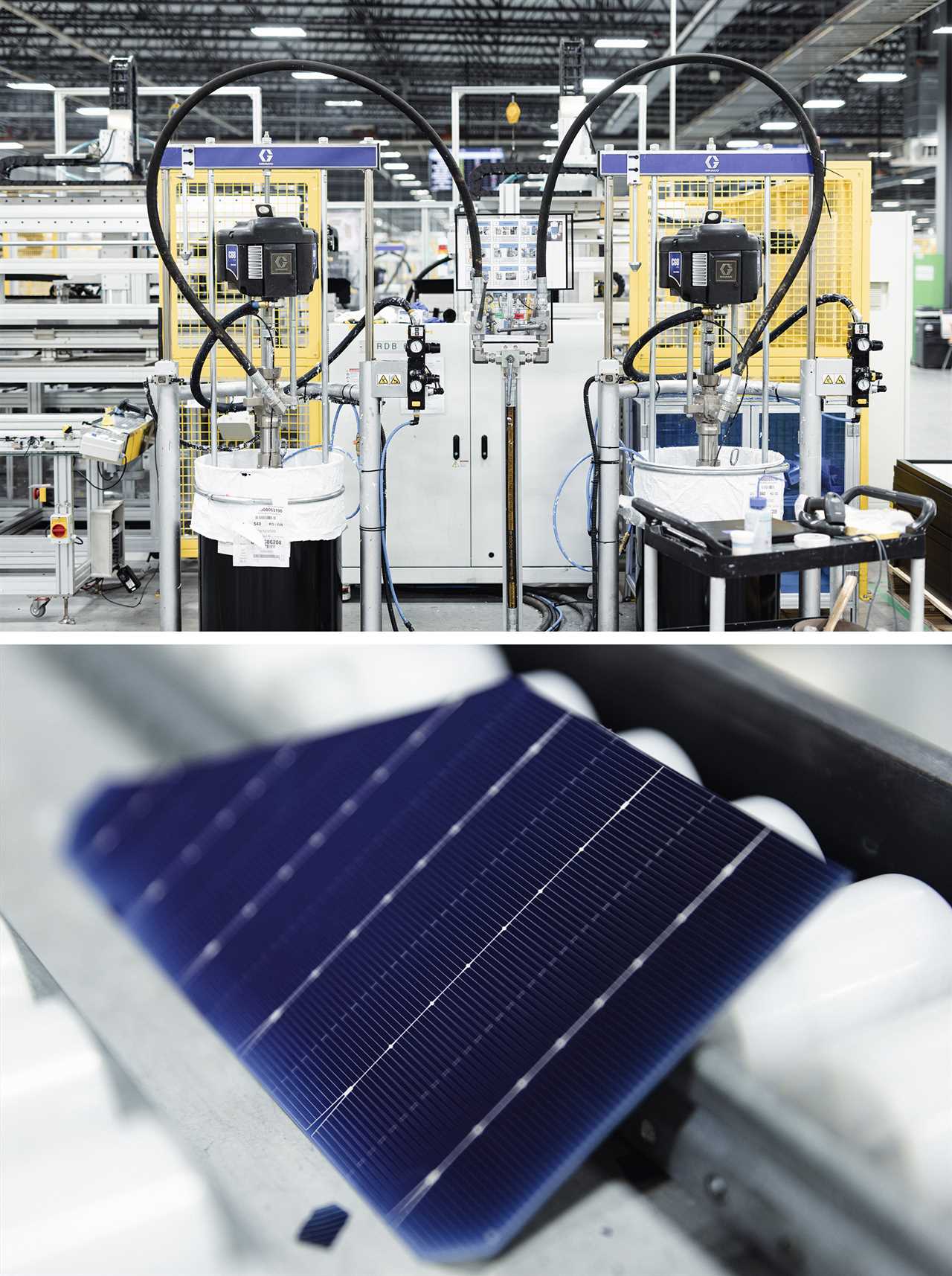
The White House bats away those arguments. They and the Senate tax writers say bringing manufacturing home is worth the cost, and that new tax increases in the bill will mean it won’t drive inflation across the economy.
More broadly, they want to reframe the debate, saying that only focusing on the price tag of the industrial policy ignores other economic benefits that rebuilding domestic manufacturing would bring, like independence from China and stable jobs for Americans.
“In the past 40-odd years, you have seen a narrowing of the economic values that we should be shaping markets to serve, down to really a singular focus on efficiency, to the exclusion of things like resilience,” said the administration national security official. “A lot of things have changed since 40-odd years ago, so this is really getting back to a broader perspective of the kinds of values and priorities we should be pursuing in economic policy beyond efficiency.”
Bernie Becker contributed to this report.
----------------------------------------
By: Gavin Bade
Title: A Georgia solar factory shows the promise — and peril — of Biden's new industrial policy
Sourced From: www.politico.com/news/2022/01/02/georgia-solar-factory-biden-industrial-policy-526287
Published Date: Sun, 02 Jan 2022 07:01:56 EST






